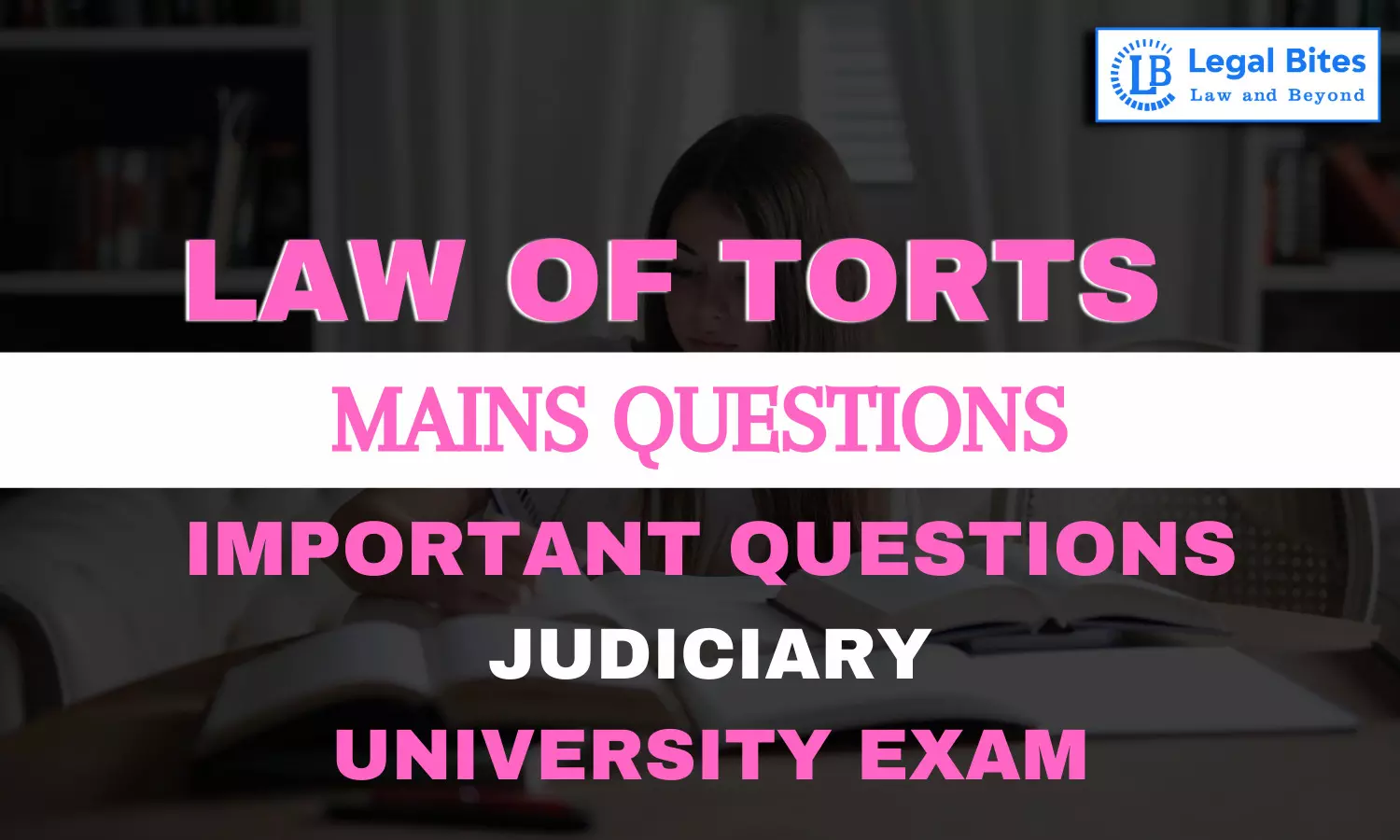What are the rules laid down in Rylands v. Fletcher, (1868) LR 3 HL 330?
Find the question and answer of Law of Torts only on Legal Bites.

Question: What are the rules laid down in Rylands v. Fletcher, (1868) LR 3 HL 330? [DJS 2015]Find the question and answer of Law of Torts only on Legal Bites. [What are the rules laid down in Rylands v. Fletcher, (1868) LR 3 HL 330?]AnswerRylands v. Fletcher is an old landmark English judgment which introduced the rule of ‘strict liability’. The facts that are relevant to lay down the rules of the case are as follows - Ryland through an independent contractor constructed a reservoir...
Question: What are the rules laid down in Rylands v. Fletcher, (1868) LR 3 HL 330? [DJS 2015]
Find the question and answer of Law of Torts only on Legal Bites. [What are the rules laid down in Rylands v. Fletcher, (1868) LR 3 HL 330?]
Answer
Rylands v. Fletcher is an old landmark English judgment which introduced the rule of ‘strict liability’. The facts that are relevant to lay down the rules of the case are as follows - Ryland through an independent contractor constructed a reservoir to supply water to his mill, the contractors failed to notice the old shafts underneath the reservoir after the reservoir was filled with water, the water flowed through the shafts causing considerable damage the coal mines of the plaintiff. The primary issue in this case was whether the defendant, Ryland could be held liable for the damages caused without his knowledge to the mines of Fletcher. The court of exchequer chamber introduced the rule of ‘strict liability’ while adjudging this issue.
The important rule laid down by the court in simple terms is that ‘when a person brings any dangerous thing into his land for a non-natural purpose, he shall be prima facie answerable for any damage arising from any escape of such dangerous thing’. The interpretation of the words like ‘dangerous’ and ‘non-natural’ will depend upon the facts and circumstances of each case. Some of the examples of dangerous things are poisonous gas, ferocious animals, and explosives. The exceptions for strict liability that were laid down in the same case are the act of God, a wrongful act of a third party and the plaintiff’s own fault. According to Justice Blackburn, the Act of God can be applied in “circumstances which no human foresight can provide against, and of which human prudence is not bound to recognize the possibility”. Examples of such circumstances are unprecedented rainfalls, earthquakes etc. Plaintiff’s default is nothing but the wrongdoing of the plaintiff. Both of these exceptions make the rule of strict liability nullified.
The court found that none of the exceptions applied in Ryland’s case imposed strict liability on the defendants. Various developments have occurred since the introduction of the strict liability rule in the Rylands v. Fletcher case.

Law Aspirants
Best Exam Preparation Platform for all competitive Law Exams. Prepare Practice and Go Beyond at https://www.lawaspirants.com/

